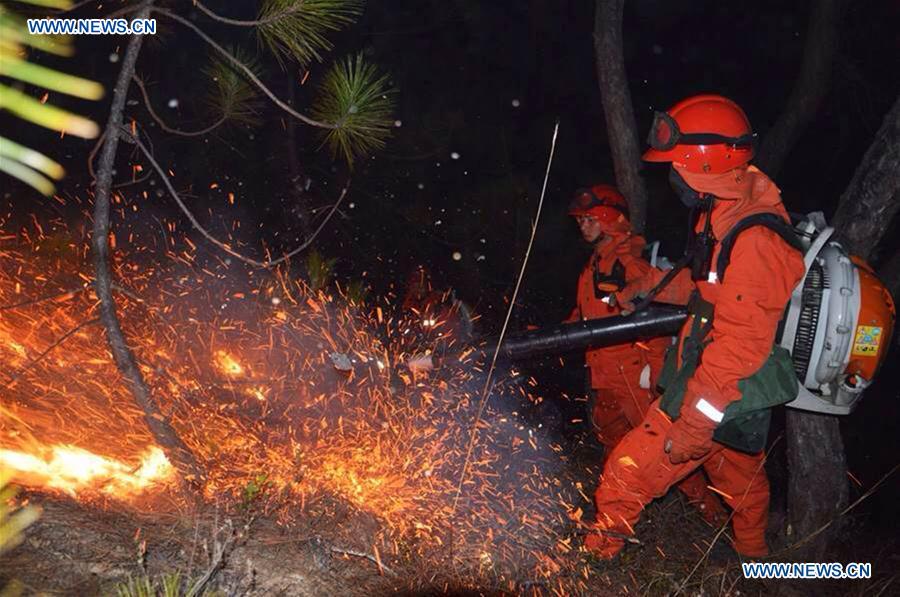Area and volume of Tibet’s forest increase year by year
In recent years, with accelerated afforestation and greater forest protection awareness among farmers, Tibet’s forest resource area and volume have both increased and there has been continued improvement to the ecological environment: Tibet’s forest area has reached 16.8million hectares, which is an increase of 1.9 million hectares from 10 years ago; forest coverage has reached 14.01%; and forest volume has increased by 10.21%.
Yonten, Director of Tibet Autonomous Region Forestry Department, said that in recent years Tibet has increased seed supply to maximize tree planting as much as possible. Remarkable results have been achieved in implementing the three major projects “a city surrounded by forest, forest water system and the green channel”; in prioritizing water conservancy and integrated development; in making survival rate and forest plantation rate the sole criterion for testing effectiveness of afforestation; and in starting the “two rivers, four streams” river basin afforestation project.
Afforestation is extremely hard in Tibet due to the vast area, high altitude, meager rainfall and short frost-free season. In recent years Tibet has consistently increased its forest area by adopting a number of measures to protect meadows and wetlands. The grasslands in northern Tibet and the southern regions have become unique landscapes on the plateau as more and more trees appear. Reporters noticed that the forest was thriving on the riverside, roadside and hillside along the Brahmaputra River, adding an endless vitality to the spring wilderness.
Afforestation not only improves the ecological environment, but also provides a “pleasant taste” for the local people and as a result more and more farmers are taking part in forestry development. Forest ecological protection and development has led to an increase in farmer income of 4.2 billion yuan in the past 5 years, which is double that of the 11th Five-Year Plan period.
“Every year we plant trees and carry out anti-desertification projects; we can earn six to seven thousand yuan and our income is increasing year on year. The wind and dust seen throughout the year previously has been reduced due to there being more trees,” said Tsewang Dorje, a villager from Dekyi village in Zhanang County of Lhoka City.
Early spring in Tibet is a good time to usher in afforestation on the snow-covered plateau as the temperature rises and everything is full of life, including the red peach blossoms and green willows in the river valley. Jamyang Sangpo, Dekyi village party branch secretary,saidthat villagers have plenty of motivation for planting trees and they know that more forest is a good thing. Originally, trees were planted on flat land but diverting water to the mountains has led to afforestation on the mountain slopes. “as long as there is soil, we’ll do our utmost to plant trees",Jamyang Sangpo said.
Your Comment
Name E-mailRelated News
-
;
-
-

-
SW China forest fire kills 1, injures 6
One firefighter was killed and six others injured struggling to put out a forest fire in Shangri-La of southwest China's Yunnan Province on Sunday.
-
-
-

-
Forest coverage reaches 51.95% in Nyingchi of Tibet
Nyingchi’s forests, canyons, rivers and lakes are widespread and biological resources are plentiful.
-
-
-
Tibet’s 15-year natural forest protection project keeps sky blue, water clear
Tibet's natural forest protection project aiming to keep its sky blue and water clear has made it become one of the areas with the best original ecology and biodiversity in the world.
-
Based in Lhasa, Tibet Vista is a Tibet travel agency that specialized in Tibet permit, and Tibet tours for both private and group travelers at a local price!
•4 Days Lhasa City Group Tour from USD 460 •8 Days Everest Base Camp Group Tour from USD 850 •15 Days Mt.Kailash Group Tour from USD 1780 •2016 Tibet Train Tours from Beijing, Shanghai, Chengdu, Xining,etc










